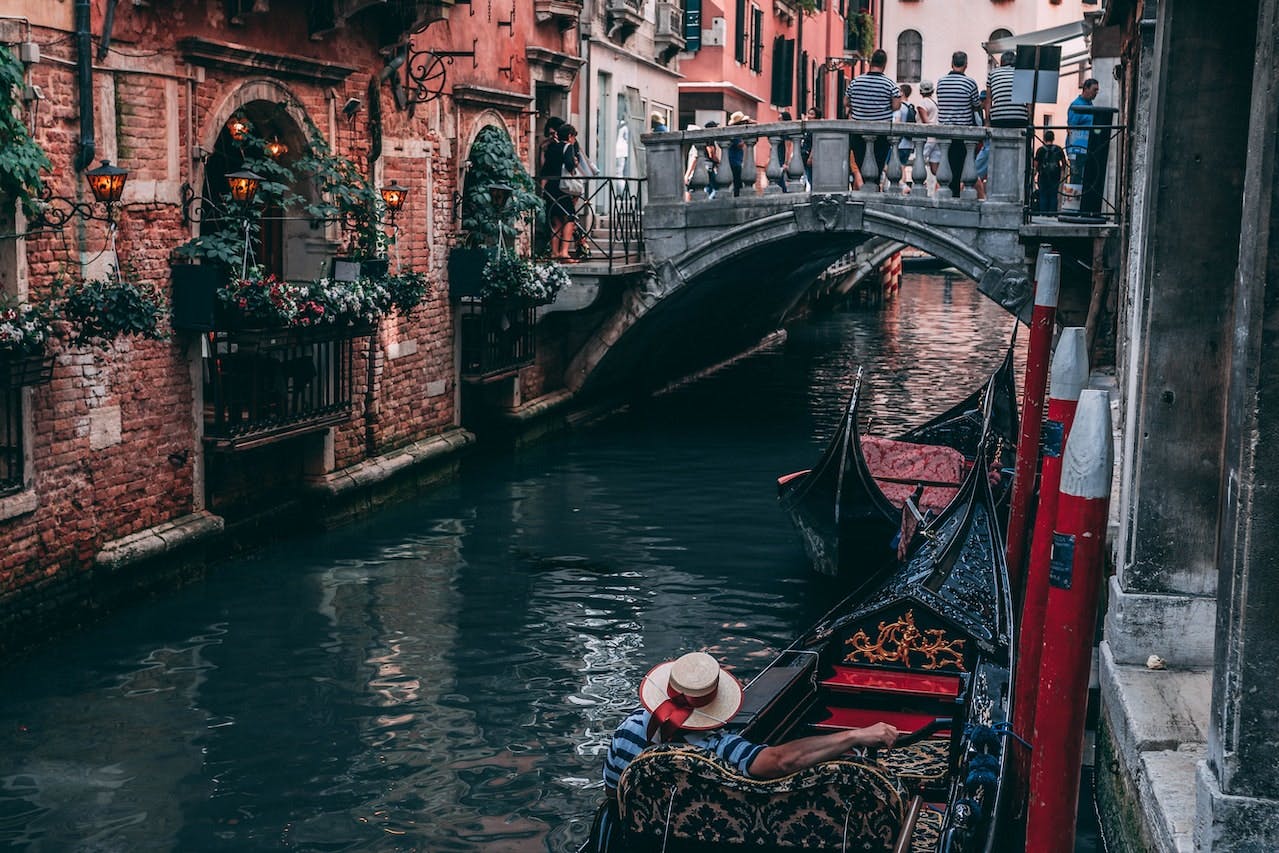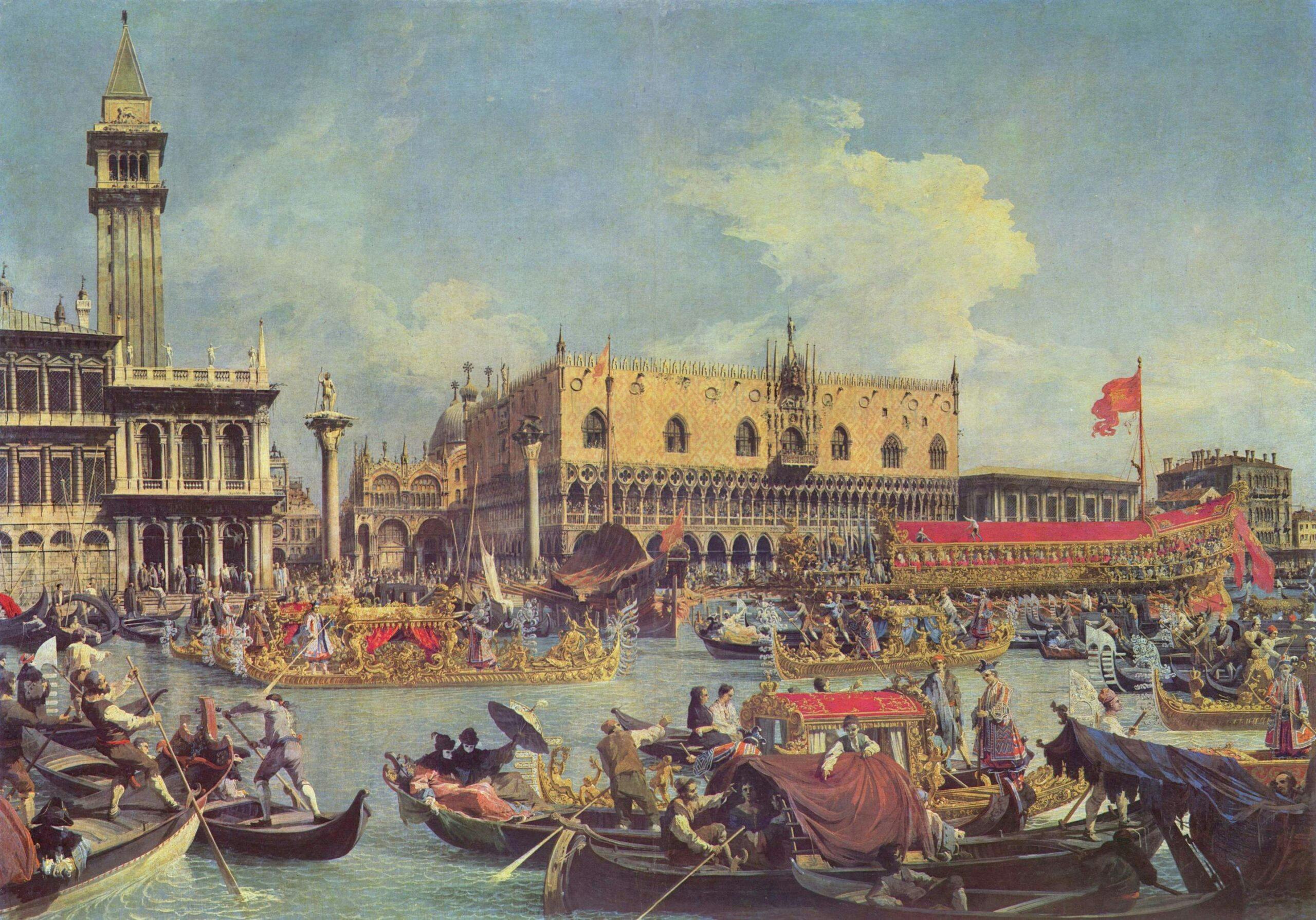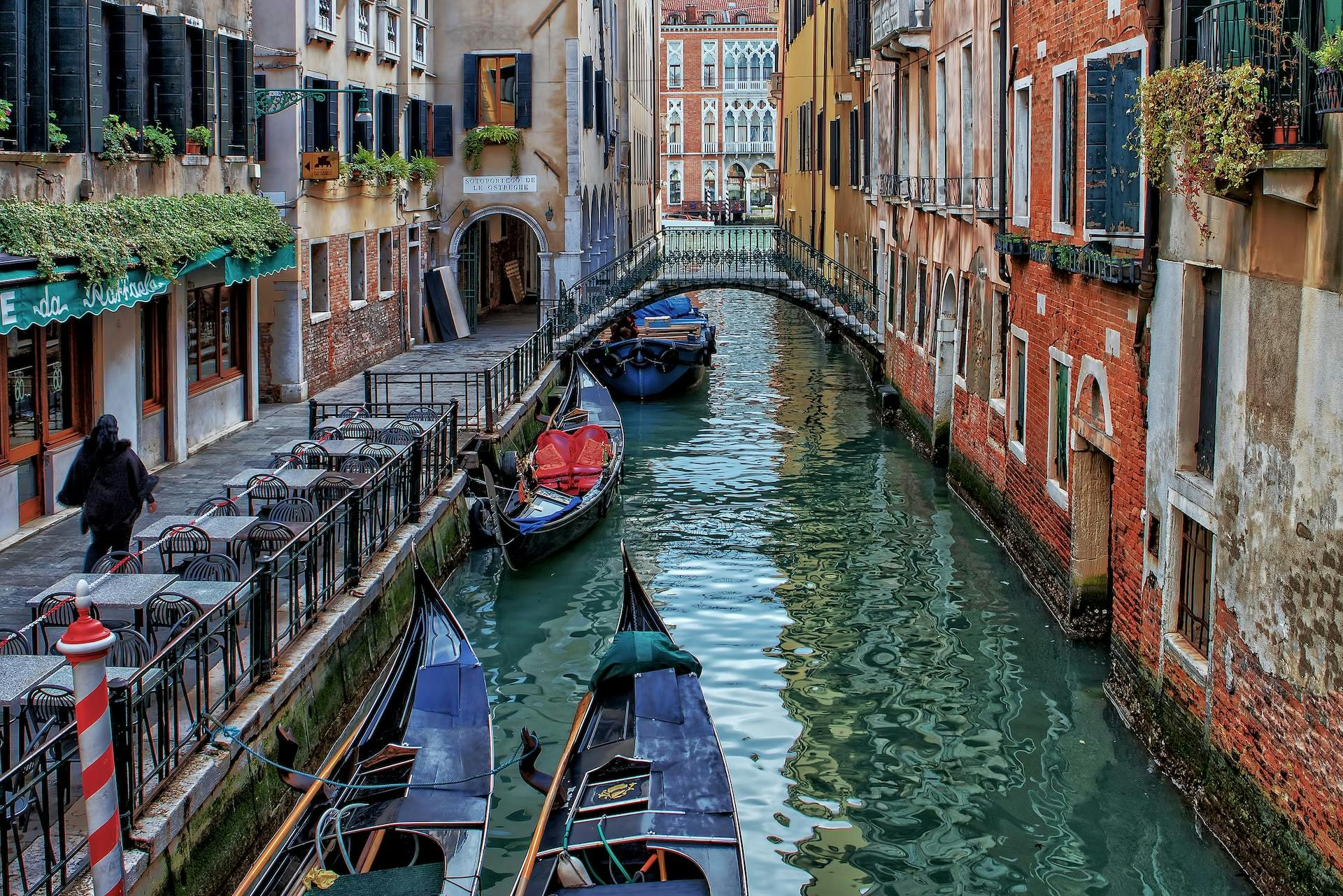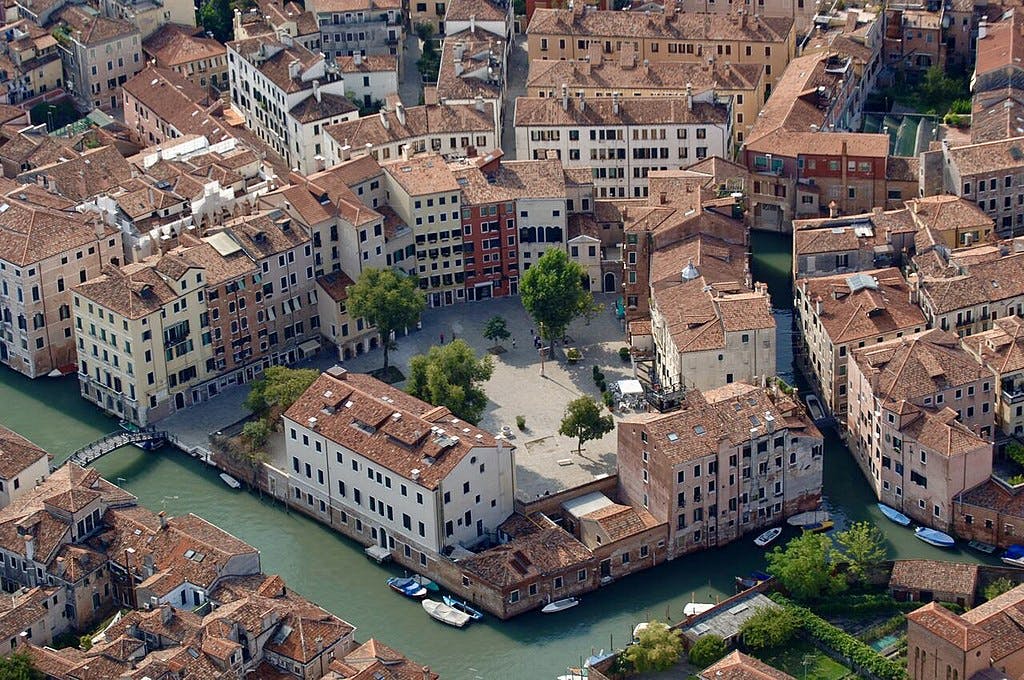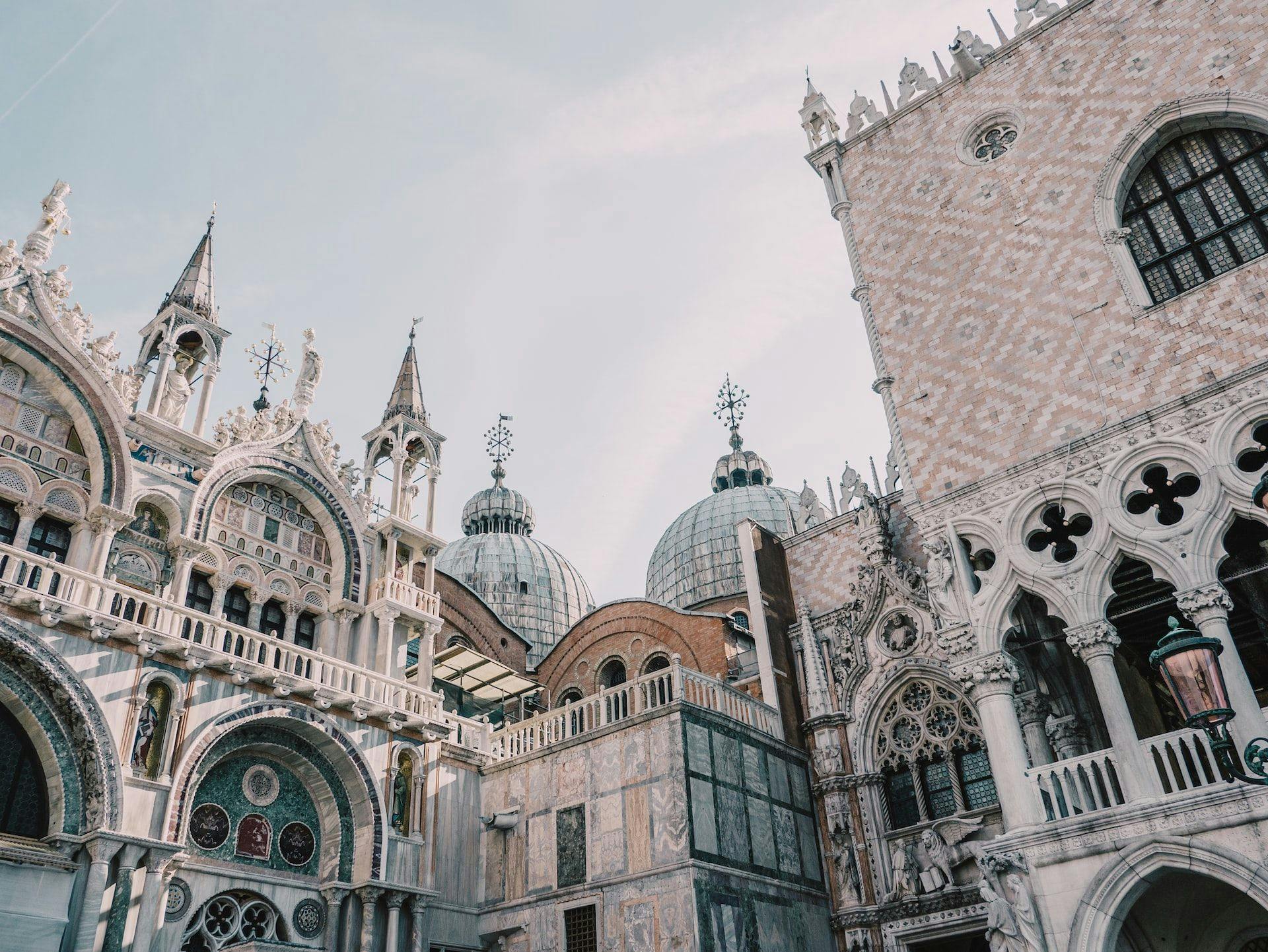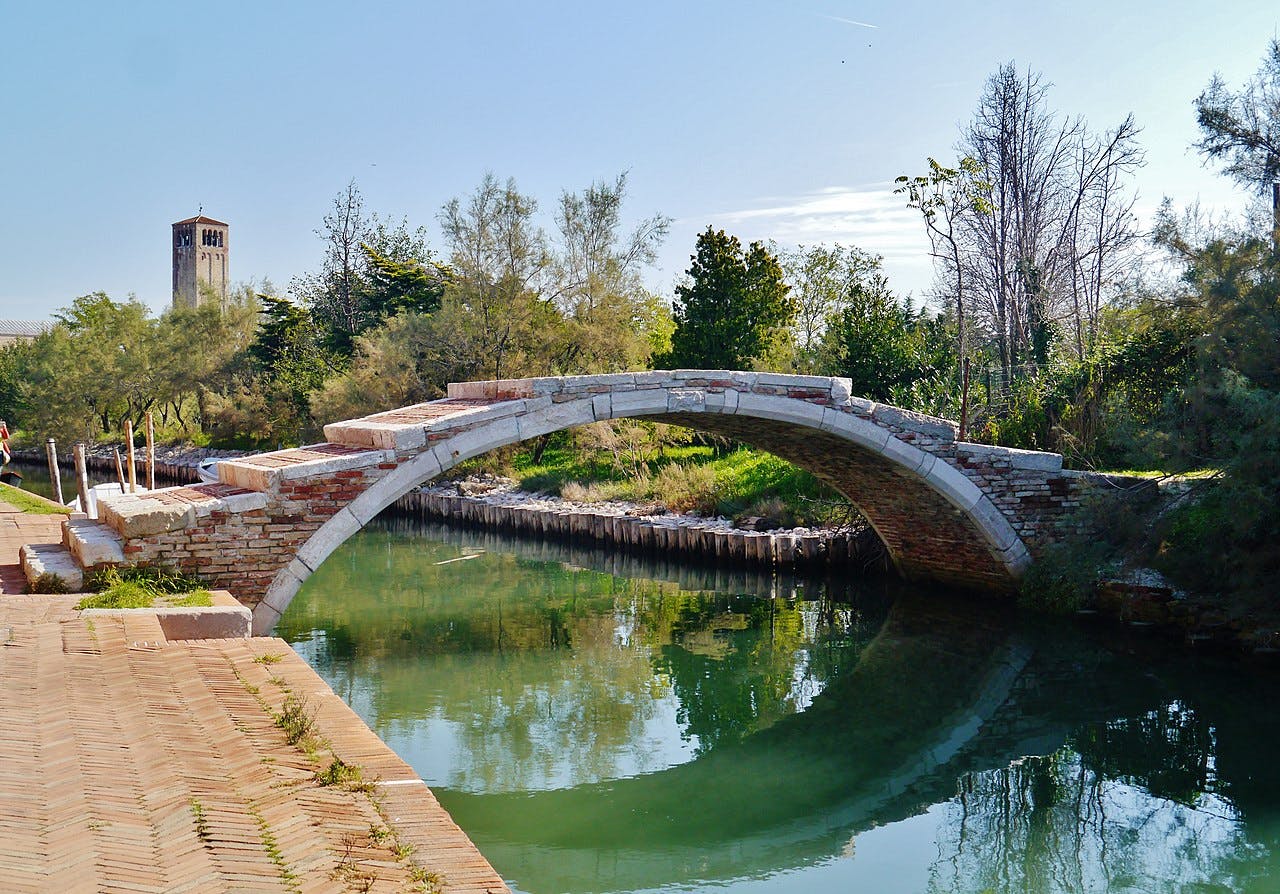The Venetian lagoon was formed in the 8th century B.C. from an earlier fluvial-palustrine environment. It is assumed that there have been human settlements here since prehistoric times, given the wealth of resources that favoured hunting and fishing. However, according to some historians, the area of today’s lagoon was scarcely populated, and the nearest Roman centres were Padua, Aquileia, Treviso, and Altino.
Some sources, therefore, date the first permanent settlement in the lagoon to the 5th century CE. The city’s origin seems to be related to the barbarian invasions, which, between the 5th and 7th centuries CE, devastated northern Italy, especially the warlike Lombards. These events intensified the migration of mainland people seeking shelter in the lagoon’s islands.
Here, the expansion of commerce and trade developed into an autonomous duchy independent of the nearby city of Ravenna, which controlled a vast kingdom. After the latter’s collapse in 751 CE, the duchy of Venice expanded and exercised more power, intensifying trade across the Mediterranean Sea.
